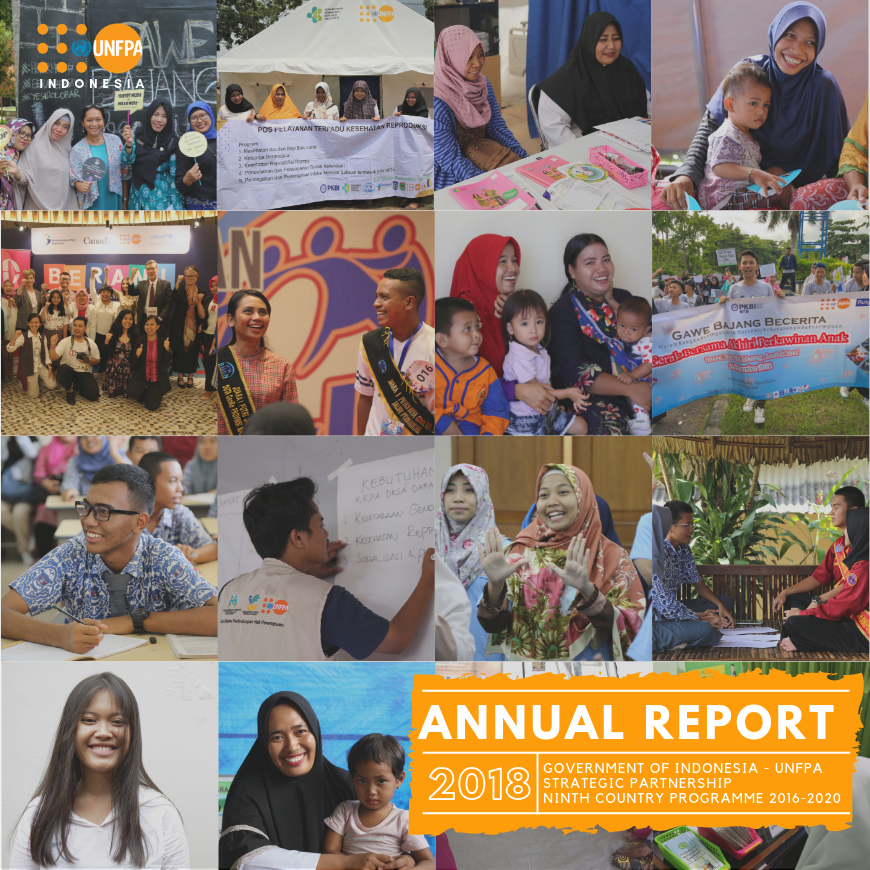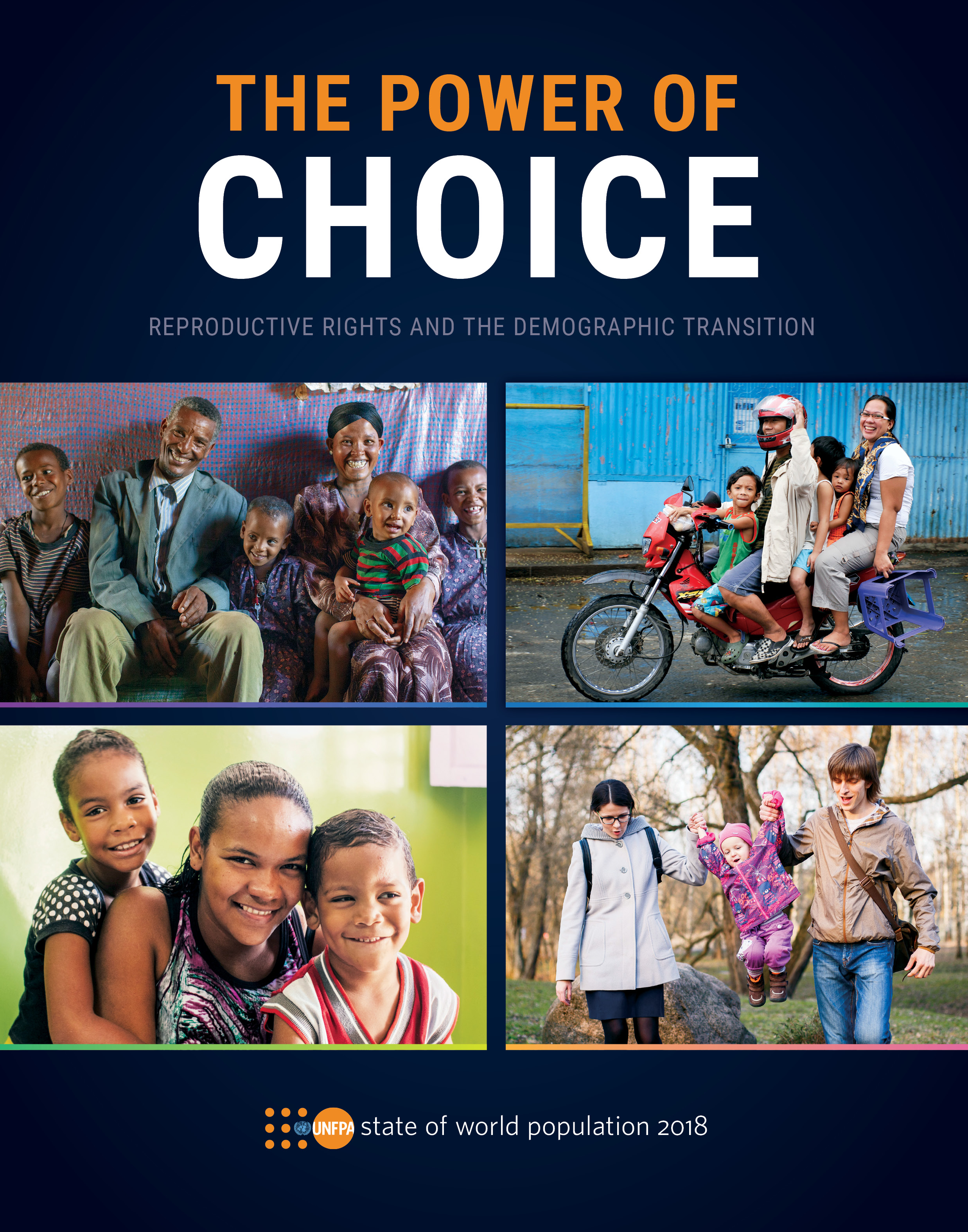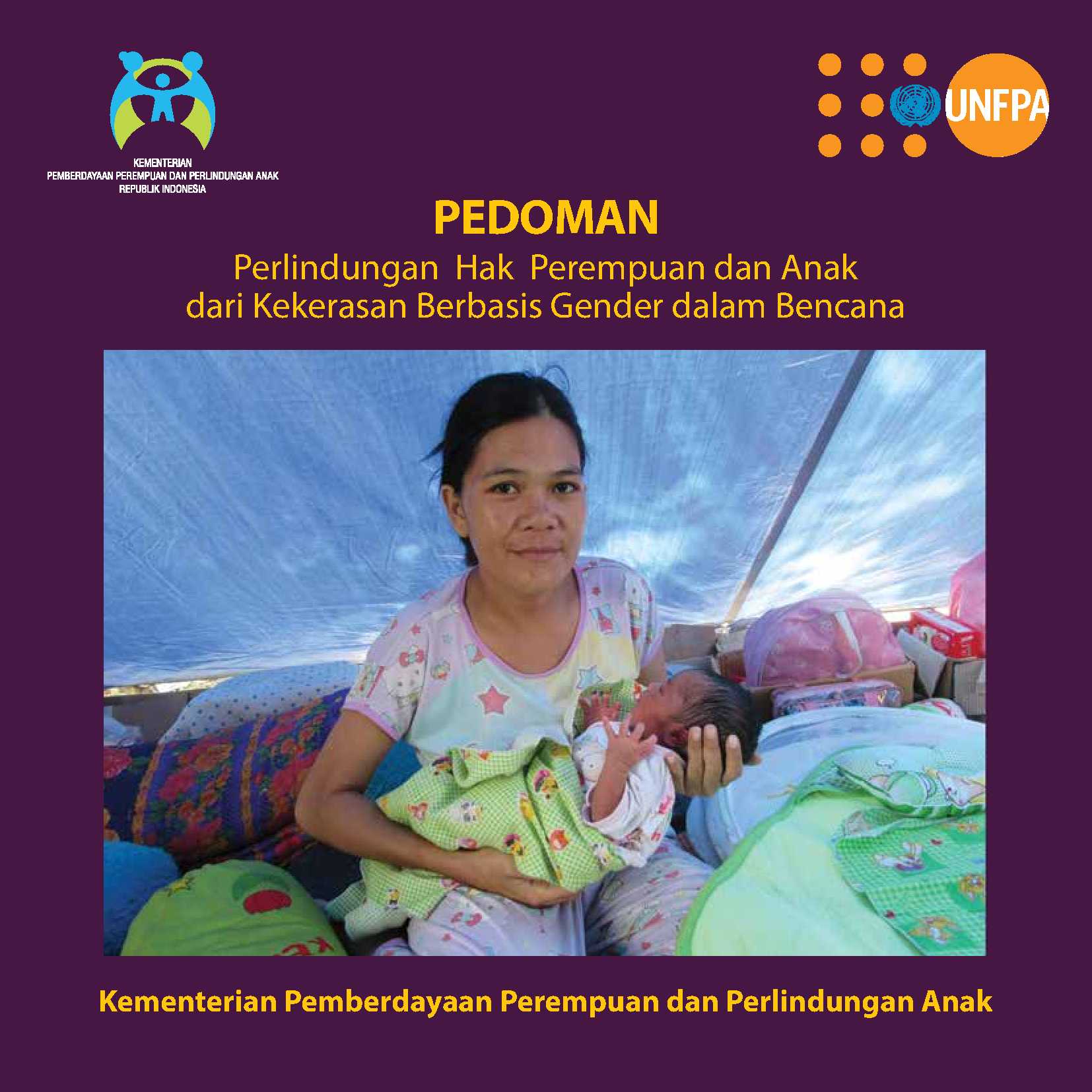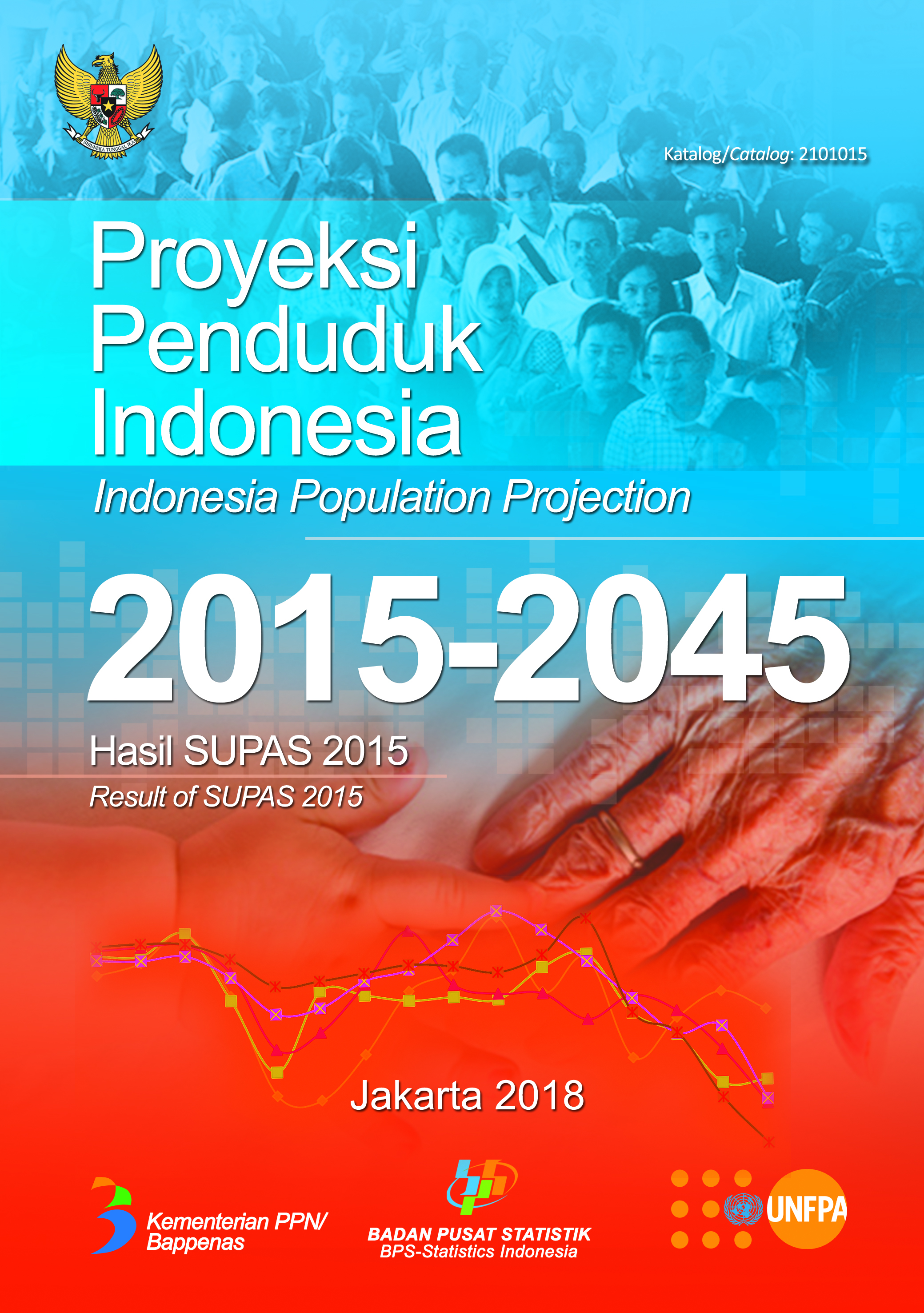You are here
New Releases

Data utilization to ensure rights-based humanitarian response & development
Data utilization to ensure rights-based
humanitarian response & development
SWOP 2019 Hightlights
State of World Population 2019 Highlights
Unfinished Business: The pursuit of rights and choices FOR ALL
State of World Population 2019
Remarkable gains have been made in sexual and reproductive health and rights since 1969, when UNFPA was established. But despite progress, hundreds of millions of women today still face economic, social, institutional and other barriers that prevent them from making their own decisions about whether, when, how often and with whom to become pregnant.

Annual Report UNFPA 2018
In 2018, UNFPA focused its work on supporting the Government of Indonesia to prepare the National Mid-Term Development Plan (RPJMN) 2020-2024. Several background papers, among others, on reproductive health/family planning, youth and adolescent sexual and reproductive health (ASRH), gender equality, and population-related issues, were produced as input for drafting the RPJMN.
UNFPA Indonesia 2018 Key Achievements
The Government of Indonesia & UNFPA:
2018 Key Achievements
UNFPA Indonesia 2017 Key Achievements
The Government of Indonesia & UNFPA:
2017 Key Achievements

State of World Population Report 2018
2018 SWOP Report: The Power of Choice
Reproductive Rights and the Demographic Transition

Pedoman Perlindungan Hak Perempuan dan Anak dari Kekerasan Berbasis Gender dalam Bencana
Under close coordination with MOWECP and MOSA, this technical guideline on Women and Children’s Rights Protection on Gender-Based Violence in Disaster Situation was developed through a collaborative process that included government, non-government organizations, and civil society, to provide concrete actions that can be undertaken in humanitarian situations. The main purpose of this guideline is to guide government and all elements of society to design, establish, and strengthen coordination mechanisms to prevent and handle cases of gender-based violence during the post-disaster phase of a humanitarian situation, to ensure that the procedures taken are sensitive to, and address, the special needs of survivors in an emergency situation.

Indonesia Population Projection 2015-2045
The Government has assigned the 2005-2025 National Long Term Development Plan (RPJMN) and the 2015-2019 National Mid-Term Development Plan (RPJMN) a guide for the government in implementing national development. This document includes the latest population data and information to be used as a basis for determining development policies.
In addition to the developing population in the future, information on demographic parameters such as age structure, birth rate, mortality rate, and life expectancy are also important for accurate development planning. These information can be calculated through population projections.
The making of the 2015-2045 Population Projection book was carried out in collaboration between Bappenas, BPS, UNFPA and through discussions involving relevant agencies such as BKKBN, the Ministry of Health, and demographic experts.
Adolescent Guideline Pocketbook in Health Crisis Situations
In disaster situations, adolescents are vulnerable but they can also be agents of change. Adolescents have dynamic, highly motivated, energetic, creative and innovative characteristics. Based on these characters, adolescents should not only be targets but they can also be utilized as partners in health crisis response. The involvement of adolescents is needed, which includes helping the affected population, assisting in data collection, distribution of aid, volunteering in evacuation etc. In particular, adolescents can support the implementation of the Minimum Initial Service Package (MISP) for adolescent reproductive health in disaster situations (MISP for adolescents).
This handbook provides a detailed guide as to how adolescents can be engaged in health crisis responses to support the implementation of the MISP for adolescents. This includes information on youth involvement, types of activities and time of implementation, experience of youth involvement from other countries, youth networks that already exist in Indonesia as potential partners as well as tools for monitoring and evaluation.